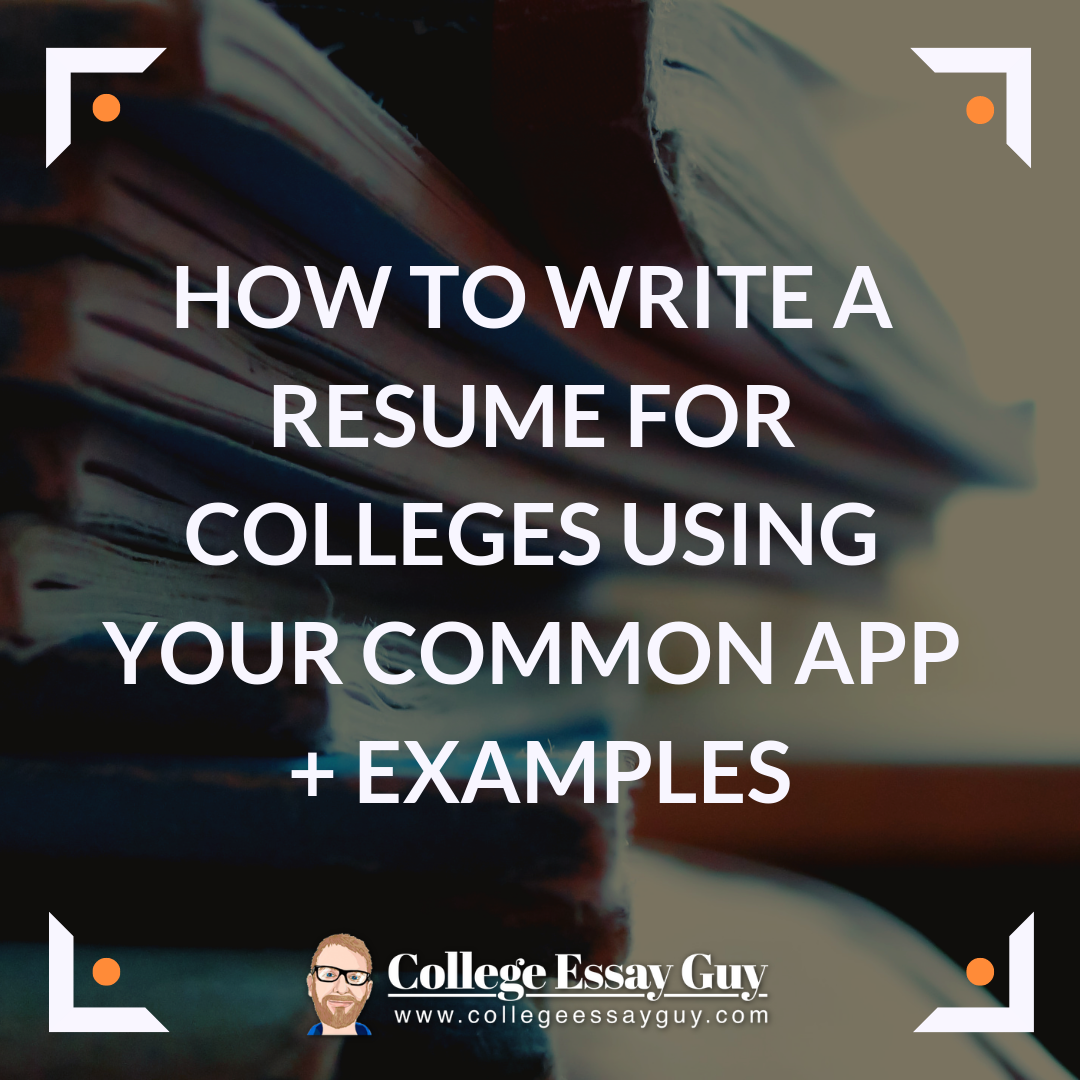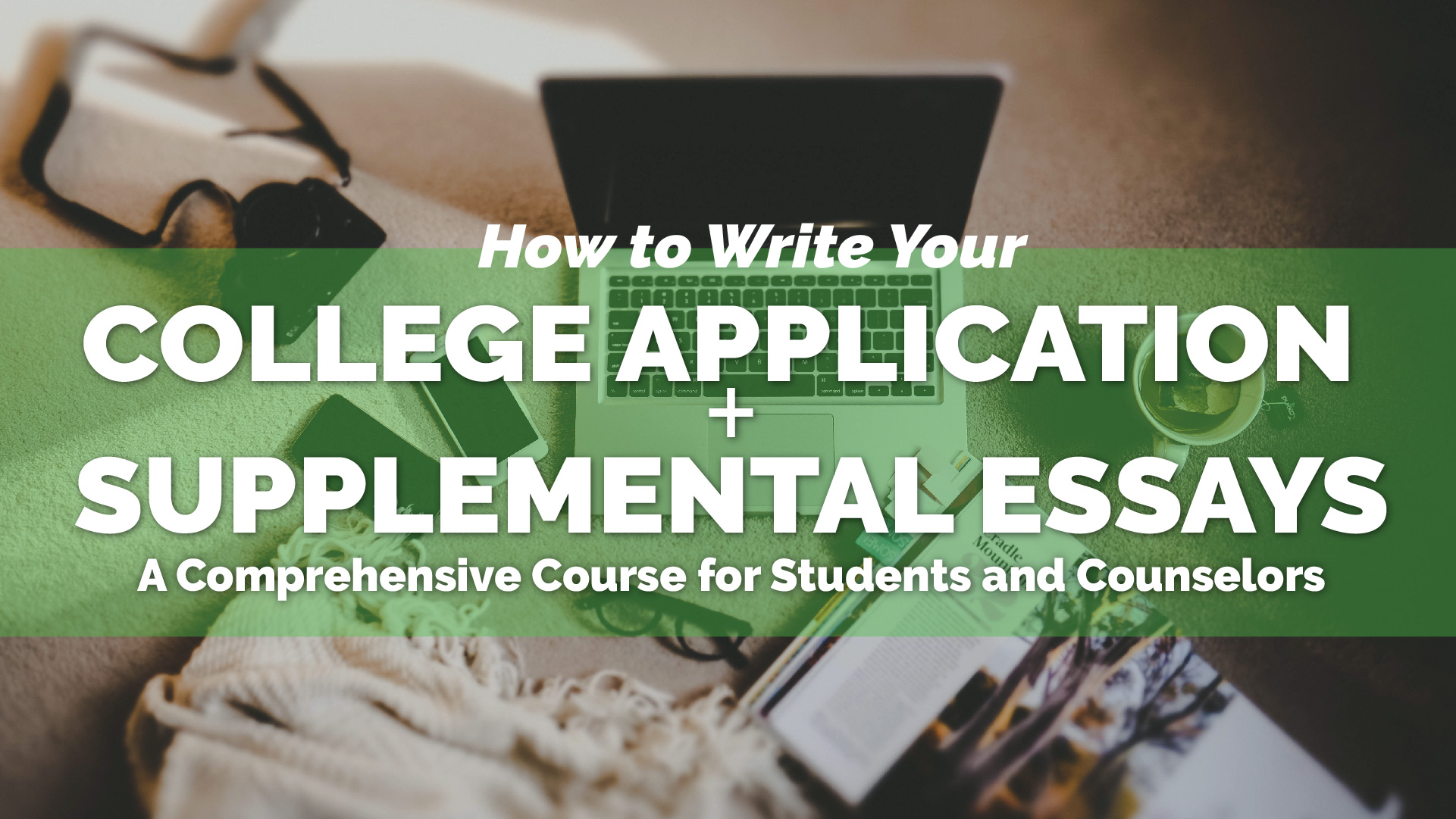While many college applications do not require a resume (and many outright ban them), knowing how to write a resume for college using your Common App is an incredible time-saving move for a high school senior. Making a college application resume will help you when applying for internships, jobs, and scholarships. In this guide, we'll provide tons of example college resumes, tips for how to format your resume, and even templates you can download and use right away.
Do I Need to Send a Resume to Colleges? (Part 1)
Before you start making a resume to send to colleges, you should first consider this important question:
Do I need to create and send a resume to colleges?
What do I mean? Well, a few things. Ask yourself:
1. DO MY SCHOOLS EVEN WANT ME TO SEND THEM A RESUME?
Find out by checking each university admissions web page or logging onto the Common App to see which schools include a place to upload a resume. Each school has a different policy on whether or not to submit a supplemental resume and it’s usually a good idea to follow their instructions. #Sarcasm
The University of Virginia says clearly that they do not want students sending additional resumes. Other schools like Brown University, Boston College, and Carnegie Mellon provide space for uploading optional resumes in the Common App, whereas some schools like the University of Texas - Austin say that submitting a resume is “strongly recommended.” i.e. You should probably do it.
In short, look at what each school requires.
2. SECONDLY, DOES MY RESUME PROVIDE INSIGHT THAT ISN’T ALREADY ON MY APPLICATION? (OR JUST BECAUSE I CAN SEND ONE, DOES THAT MEAN I SHOULD?)
So if submitting a resume is optional, how do you know if your resume provides value beyond your Activities List? Easy. Take a look at your entire application, including your main Common App essay, your Activities List (maximum of 10 spots and 5 honors/awards), your supplemental essays, and your Additional Info section.
(Note: If you haven’t noticed, that’s a lot of space to submit information about what you’ve been doing.)
Then ask yourself this: Is there something important about my application that is not already being highlighted or communicated clearly to the university admissions board? One example might be:
Significant work experience. Have you worked multiple jobs almost full-time to help support your family? Or did you have an awesome internship that you couldn’t fully explain in the 150 characters that the Common App provides? Or maybe you spent hundreds of hours studying marketing and internet search engine optimization and started your own business? It might be worth mentioning these in more detail. Take a look at this (real) resume and ask yourself: Would it have been possible for this student to include all of this detail in 10 spots of 150 characters each? Probably not.
Example College Resume Template #1: Microsoft Word or Google Docs
I know, this resume looks unreal for a high school senior. But even if your experience is 1/3rd of this and you’re not able to fit it into your Activities List, consider creating a separate resume that highlights your unmentioned accomplishments and experience
Sometimes you just need more space for all of your activities!
Here are some other reasons to create a separate resume:
So many awards. If you’ve won 28 awards as Captain of a Nationally Ranked Colorguard team, it might be worth creating a separate resume to list them all, since they definitely won’t fit on the 5 spots they provide you.
So much community service. If you’ve been involved with 6 or 8 separate service organizations in different capacities or led an unusually high number of projects, it might be worth creating a separate resume to highlight each of those and what you’ve done, rather than taking up all of the space on your extracurricular activities list.
So many responsibilities. Did you have a lot of different jobs within one particular organization? Is it difficult to list both what your responsibilities were and the impact you had on the organization in 150 characters? The resume is your chance to go into greater detail about your diverse roles and responsibilities, as long as it communicates and highlights new information.
IMPORTANT FINAL NOTE: If there are just one or two smaller activities that you couldn’t fit in the ten spaces provided on the Common App activities list, you can actually probably just include those in the Additional Information section and not have to create a separate resume just to include those two. Check out this blog post to learn how to use this space.
3. LASTLY, ARE THERE OTHER REASONS FOR CREATING A RESUME?
Yes! For example, if you are:
Applying for outside scholarships: When applying to scholarships from 3rd party organizations, many require resumes in addition to essays.
Applying to jobs or Internships: If applying to either of these as a high school student or college freshman, it would be easy to tweak your college resume and gear it towards specific internships or summer jobs.
Attending an interview: If you have college interviews with alumni or for jobs or internships, it might be a good idea (read: you probably should) bring a copy of your resume to provide some talking points during your interview. They may have seen it already, but it never hurts to be prepared.
Read on to part 2 to see how to turn your Common Application into a simple and clear resume for your university admissions application and see two more awesome sample college resumes.
How to Write a Resume for Colleges Using Your Common App (Part 2)
To follow along, click this link to open up a template, go to File > Make a copy and copy it to your Google Drive and replace the information with your own as you read.
To begin, your basic resume should have three sections: education, experience, and honors.
Oh hey, look. The Common App also has sections like these: “Current or Most Recent School”, “Activities”, and “Honors”. Reminder: this guide is how to translate these sections directly from the Common App into your resume sections. It’ll save you lots of time and produce a solid resume.
And if you haven’t yet completed your Common App Activities List, read this article and complete that first before going any further.
Here’s how to translate each section:
EDUCATION
This is the simplest part. No need for fancy footwork--just plug in information. Your resume could look like this:
Education
High School Name, City, STATE (start year – end year)
GPA: Weighted: #.## / Unweighted: #.## SAT Subject Tests:
SAT: #### Subj 1: ###
ACT: ## Subj 2: ###
EXPERIENCE
Easy as this: Copy and paste all of the components asked for in each entry on the Common App into a new entry in the “experience” section of your resume.
Here are the components that your Common App asks for:
Activity type.
Position/Leadership description and organization name. (50 character limit)
Please describe this activity, including what you accomplished and any recognition you received, etc. (150 character limit)
Participation grade levels.
Timing or participation: (Hours spent per week, Weeks spent per year)
Example of Common App entry:
Volunteer activity
Chief Facilitator, International Feed-the-Youth Summit, Philadelphia
Developed lesson plans, lobbied local businesses for sponsorships, held marketing sessions, established partnerships to run 2-wk leadership camp.
11th grade
Summer 2015.
Here’s what that might look like when plugged into a resume:
Experience
Chief Facilitator, International Feed-the-Youth Summit, Philadelphia
Developed lesson plans, lobbied local businesses for sponsorships, held marketing sessions, established partnerships to run 2-wk leadership camp (Summer 2015).
Clean and simple. Feel free to break this down into bullet points and add a bit more detail so it looks like the examples in this guide. Maybe like this:
Chief Facilitator, International Feed-the-Youth Summit, Philadelphia (Summer 2015)
Held marketing sessions and lobbied local businesses to establish partnerships to run 2-week leadership camp
Developed lesson plans on leadership for 60 middle and high school participants
HONORS
Also easy: Put all of the components listed per entry in your “honors” section into an entry into your “honors” section of your resume.
Your honors section in your Common App asks for these components:
Honors title.
Grade level.
Levels of recognition.
Example:
Advanced Placement Scholar with Distinction
11th grade
National
If you were to translate this into a resume, it might look like this:
Advanced Placement Scholar with Distinction, National Level (2014)
But don’t stop there. Notice you have 100-characters on your Common App, and you can use that space to emphasize selectivity. How? Like this:
Advanced Placement Scholar with Distinction – National Level (2014) - Award given to students scoring an average of at least 3.5 on all AP exams taken and scores of 3 or higher on five or more of these exams.
ANYTHING ELSE I SHOULD INCLUDE ON MY RESUME?
There might be a few more things to include, if you have them. It also might depend on the purpose of your resume. Examples:
Additional Educational Opportunities
A summer enrichment experience such as the Center for Talented Youth, the Research Science Institute (RSI), or Duke TIP
MOOCS (Massive Open Online Courses)
Online classes from a community college or elsewhere
Proficiencies:
Programming languages like Java, Python or C++
Spoken languages with proficiency level
Significant experience with software like Final Cut Pro, Photoshop, or others.
A cover letter:
If you’re using your resume for internship or job experiences, include a short half- to full-page explanation of your goals and experience that will make you an asset to the organization.
For examples of how to incorporate these into your resume, see these examples below.
Example College Resume Template #2: Microsoft Word or Google Docs
Example College Resume Template #3: Microsoft Word or Google Docs
Example College Resume Template #4: Microsoft Word or Google Docs
Example College Resume Template #5: Microsoft Word or Google Docs
Example College Resume Template #6: Microsoft Word or Google Docs
For more on college resume templates, check out our other blog post.
Additional resume tips and another awesome sample resume (Part 3)
Finally, before you go off into the world and begin creating your resume, there are a few guidelines to keep in mind as you format and structure your resume. And, rather than repeat tips already provided elsewhere, here's a handy guide (thanks Klein High School!) that includes a few general tips, important sections to include, a few DOs and DON'Ts, and one more awesome resume example











